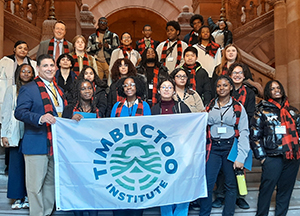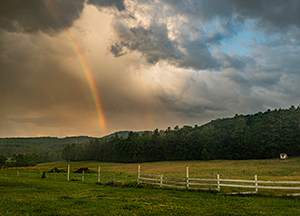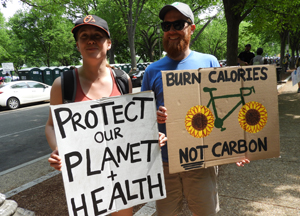
Our Adirondack Island: Why Wildlife Need Park Agency Reform
Kevin Chlad - Director of Government Relations
Tuesday, December 24, 2019
The Adirondack Park is a world-renowned sanctuary of the natural world: a special place, a place apart. We are fortunate to have a special and diverse collection of wildlife species due to the size of our “Adirondack Island.” This is something we should not take for granted. A recent report published by the United Nations warned that around 1 million animal and plant species on our planet are now threatened with extinction, many within decades, more than ever before in human history.
An Adirondack Island
In the mid-1960s, ecologists Robert MacArthur and E.O. Wilson coined the Theory of Island Biogeography. This theory was based on their studies of actual islands, and the number of species relative to their size and distance from each other: They discovered that smaller islands had less species diversity and larger islands had greater species diversity. Relative distance between islands also impacted the amount of species diversity. It turns out that this theory translates to the mainland. Ecosystems are islands, and the larger the intact ecosystem, the more species diversity the ecosystem can host, generally speaking.
The 1970s Adirondack Park Agency (APA) Act provided a framework to protect 6.1 million acres for a diverse array of wildlife species by attempting to keep our Adirondack Island together, as one interconnected landscape of public and private lands. While great achievements have been made during the APA’s history, science and our understanding of the Adirondack Park have come a long way, and new actions are needed at our state’s capitol to better reflect what we know about the Adirondacks and how to preserve them for the sake of wildlife and their fragile communities.
To protect our Adirondack Island and the wildlife that depend on it, two major actions are needed this year to further prevent habitat fragmentation and re-establish much needed Park leadership: Conservation Development Legislation and Adirondack Park Agency board appointments.
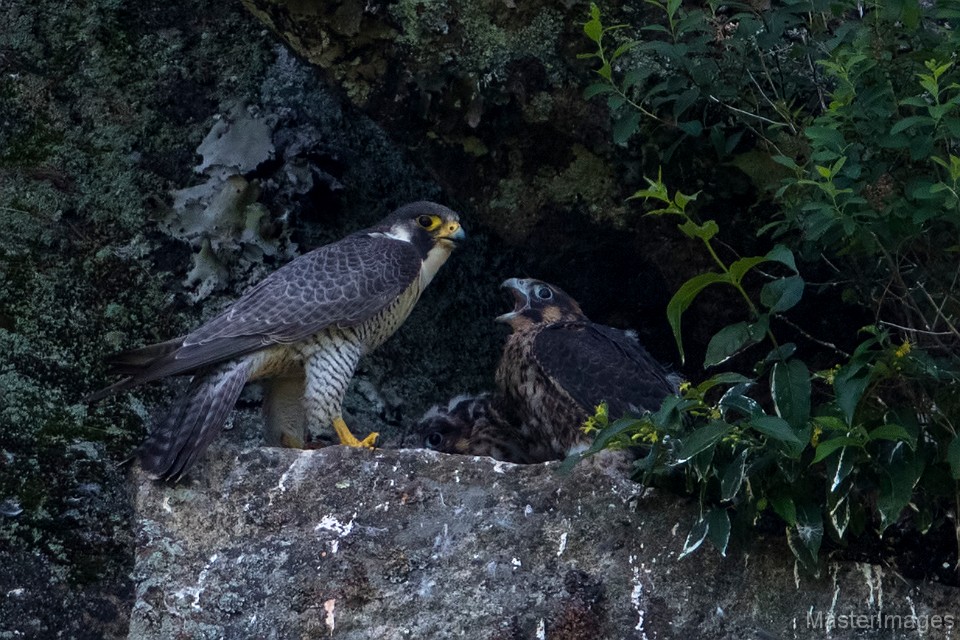 Pictured: Peregrine Falcon, an endangered species in New York State
Pictured: Peregrine Falcon, an endangered species in New York State
Why Clustered Development is Critical for Wildlife to Thrive
The spatial pattern of development is fully, if not more, ecologically important than overall density when it comes to preserving habitat for wildlife. A study by the Wildlife Conservation Society estimates that human impacts extend out at least 150-200 meters from homes. “By locating homes closer together, zones of human influence overlap, lessening the overall area of impact.”
 Photo: WCS Report, Make Room for Wildlife
Photo: WCS Report, Make Room for Wildlife
What is “Conservation Development”?
Conservation science and land use planning techniques have advanced greatly since 1973, when density limits were first used on a Park wide basis to protect open space. “Conservation development” is a modern approach to design, construction, and stewardship of a development property that achieves functional protection for wildlife, while also providing social and economic benefits to people.
Conservation development preserves the most critical wildlife habitats, such as wetlands, mature forests, and nesting zones. It also prioritizes preserving key landscape features with large square or circular sections of open space.
Without conservation development, poorly planned development impairs ecosystem function and decreases biotic integrity, altering species behavior and composition, increasing human-wildlife conflicts and fragmenting ownership and the way lands are managed.
Conservation Development Legislation Awaits Passage at the State Capitol
The good news is that an effort to move toward a more modern, wildlife-friendly conservation planning model is in the works in New York State. The goal of this updated Conservation Development Legislation (A.8123-a Englebright/S.6484 Kaminsky) is to mandate the clustering of development for the largest subdivisions of land in the Adirondacks, preventing deforestation and other negative wildlife impacts for the majority of each subdivided tract.
This legislation was updated and amended from an earlier version, in partnership with the Adirondack Association of Towns and Villages, the Empire State Forest Products Association, the Local Government Review Board, and the Wildlife Conservation Society. The resulting consensus bill provides open space protections while adding incentives for developers and communities, including a “density bonus” program and a program to enable a transfer of potential development between landowners. It’s a win-win-win situation for developers, landowners and wildlife.
The Adirondack Park Agency’s Board Needs New Leadership
While the federal government is moving in the wrong direction on the environment, wilderness protection, parks and climate change, New York’s APA board must continue ever upward with Adirondack Park policy, in the spirit of our state’s motto Excelsior. Adirondack wildlife will be impacted by climate change, overcrowding, invasive species, pollution, poorly located development and aging infrastructure, and a full diverse APA board will be needed to navigate these challenges. The APA Board is charged with making decisions on pressing policy issues and permit applications before them that have important implications for Adirondack communities, wilderness, wildlife, clean water, and the people who live in and love these mountains.
Seven of eight Adirondack Park Agency appointed board seats are either vacant or held by members serving on expired terms. The eighth board seat will expire in the end of June 2020. The APA board is also without a chairperson. Governor Cuomo’s team has an opportunity to do as they have in the past, partner with the Senate by nominating and approving a full slate of new and returning board members in 2020 with a diverse set of backgrounds and expertise. This would restore the Adirondack Park Agency Board to full capacity.
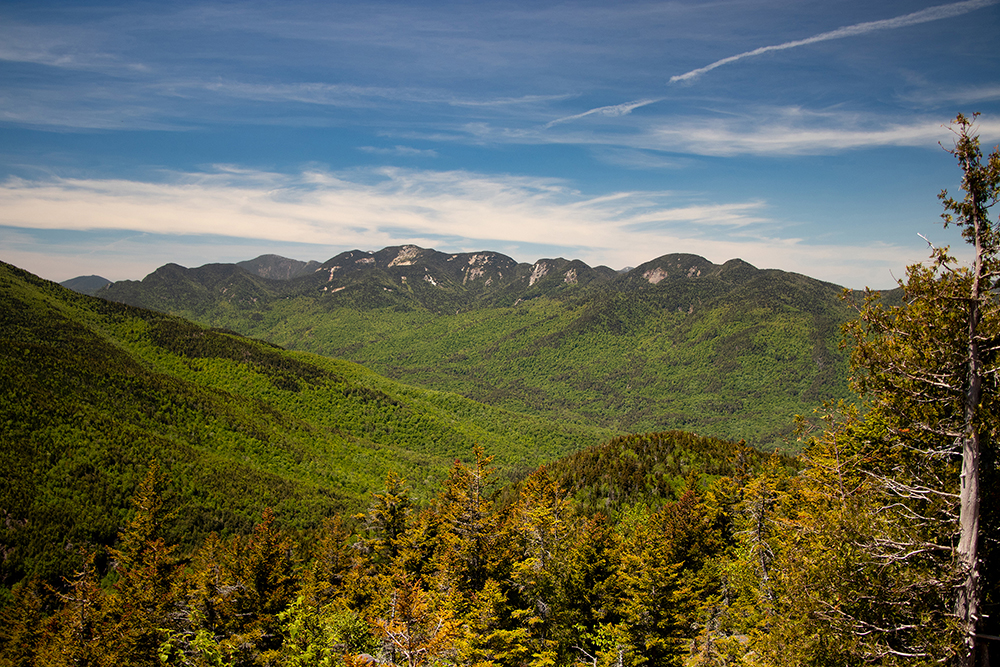
What the Job Requires
The Park Agency administers a regional land use program over the public and private lands of the Adirondack Park, and upholds the Wild, Scenic and Recreational Rivers Act and New York State Wetlands Act. This complex set of laws requires a detailed understanding of many public and private land use classifications and natural resource systems and how they should, as a whole, be managed for conservation and development consistent with the State’s goals for preservation of the Adirondacks and for the benefit of local residents and over 12 million annual visitors. This is no small task.
As the Governor and Senate consider who should sit on the APA board, it is of critical importance that all nominees have a demonstrated track record of and commitment to supporting the laws and policies of the State of New York as they relate to the protection of the Adirondacks and the mission of the Adirondack Park Agency.
The full slate of nominees for the APA board should collectively have real world experience in: environmental law and environmental science, land use planning, public lands management, private business, Adirondack public service or governance, and development. This is a high bar, but a fair request for a board with such an important responsibility. The monthly decisions of the Adirondack Park Agency board bring the APA act to life, with big ramifications for future generations. The wildlife of the Park are unable to attend meetings, give public comment, or write letters. APA board members are tasked with speaking for the animals and plants that cannot speak for themselves. Adirondack wildlife are with us on this island, and they depend on our sound judgement.
Hope for our Wild Island
There are big decisions made every year in Albany, NY, which have lasting impacts for the largest park in the contiguous United States. Conservation Development must be made law for the Adirondack’s largest subdivisions, and the Adirondack Park Agency board should be filled with a full slate of candidates with diverse backgrounds and real world experiences. If we accomplish these critical actions, we can protect our Adirondack island and the wildlife that live here, with us, for future generations.

Kevin Chlad joined the Adirondack Council staff in 2011. He leads the Council’s Albany-based Government Relations team, building coalitions and lobbying government officials to improve protection and grow funding for the Adirondack Park. |
||

